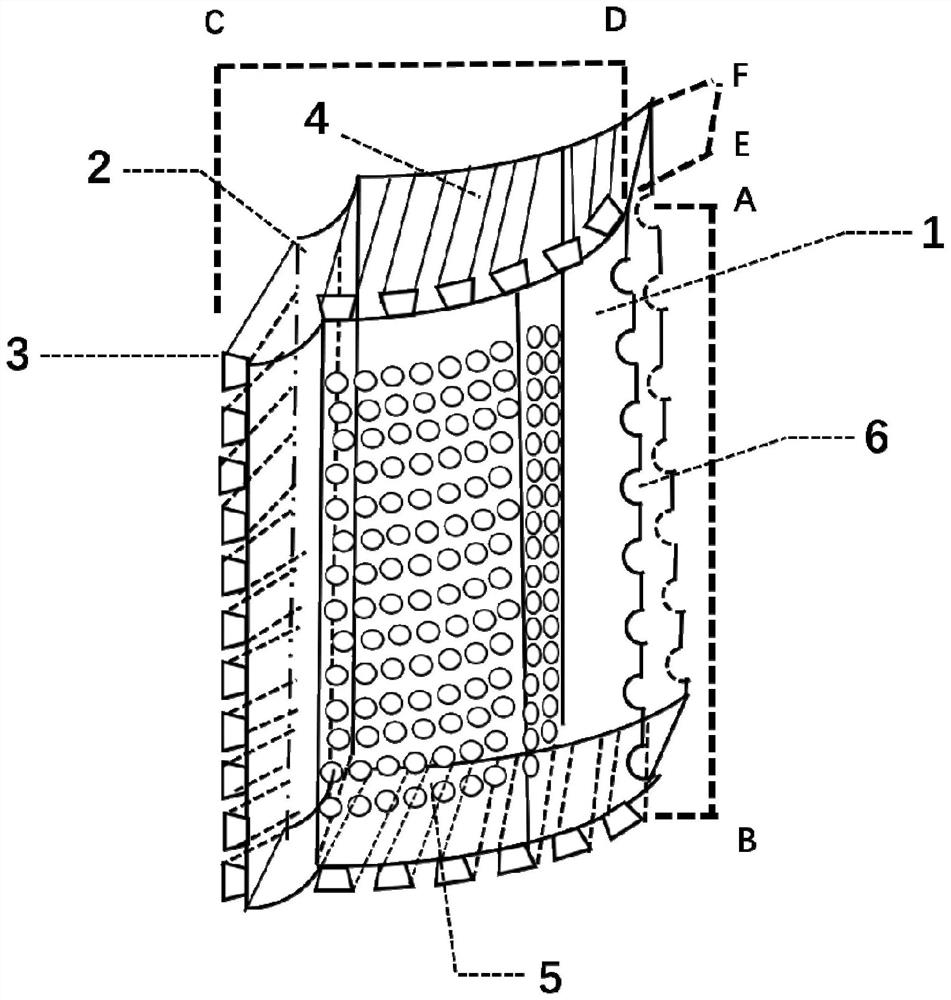Posterior spinal reconstruction device used after laminectomy
A technology of resection and laminectomy, applied in the direction of spinal implants, prostheses, manufacturing tools, etc., can solve problems such as spinal instability, spinal canal restenosis, etc., and achieve a strong shaping effect
- Summary
- Abstract
- Description
- Claims
- Application Information
AI Technical Summary
Problems solved by technology
Method used
Image
Examples
Embodiment Construction
[0018] The present invention will be described in further detail below in conjunction with the accompanying drawings.
[0019] see figure 1 , the present invention is a 3D printing assembled degradable artificial lamina, the raw material used is polycaprolactone-tricalcium phosphate mixture (w / w 2:8-5:5), and the lamina degradation time is about 24 -36 months. The printing technology used is fusion extrusion molding (FDM), and the entire artificial lamina is designed in one piece. The main body 1 of the artificial lamina is in a semi-arc shape, and the parameters of the lamina vary according to different positions. Cervical lamina length (AB) is 10-15mm, transverse span (CD) is 10-15mm, lamina thickness (EF) is 3-5mm, arch height is 10-12mm; thoracic and lumbar lamina length is 15-30mm , the transverse span is 10-15mm, the thickness of the lamina is 6-8mm, and the arch height is 10-12mm. The main body of the lamina is divided into inner and outer layers, the inner layer is...
PUM
| Property | Measurement | Unit |
|---|---|---|
| pore size | aaaaa | aaaaa |
| length | aaaaa | aaaaa |
| thickness | aaaaa | aaaaa |
Abstract
Description
Claims
Application Information
 Login to View More
Login to View More - R&D
- Intellectual Property
- Life Sciences
- Materials
- Tech Scout
- Unparalleled Data Quality
- Higher Quality Content
- 60% Fewer Hallucinations
Browse by: Latest US Patents, China's latest patents, Technical Efficacy Thesaurus, Application Domain, Technology Topic, Popular Technical Reports.
© 2025 PatSnap. All rights reserved.Legal|Privacy policy|Modern Slavery Act Transparency Statement|Sitemap|About US| Contact US: help@patsnap.com

